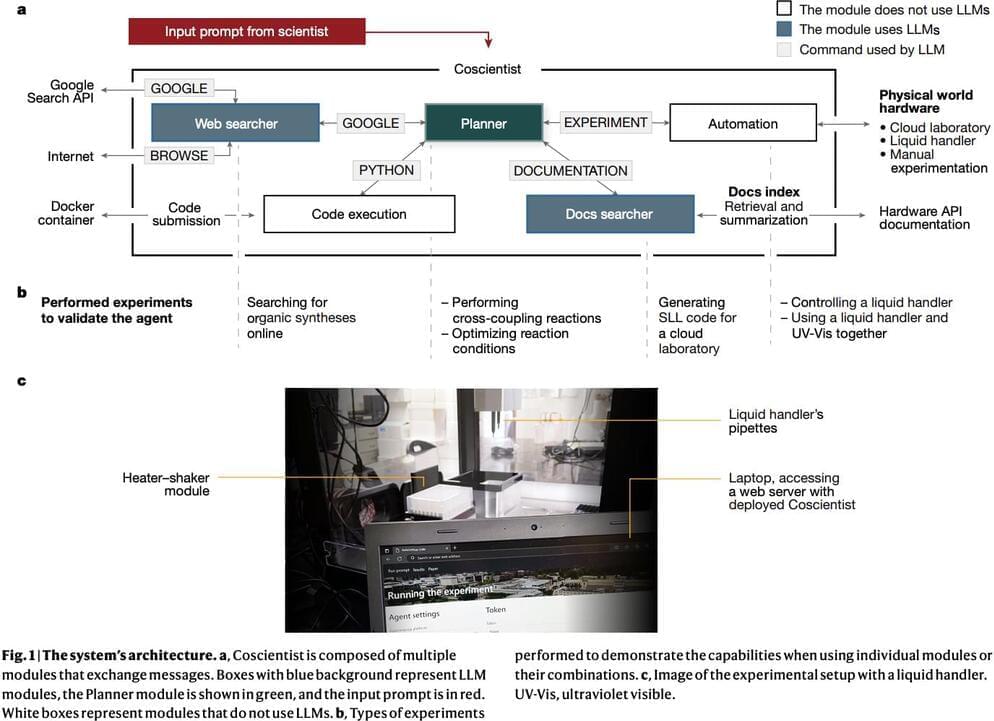https://cell.com/cell/fulltext/S0092-8674(23)00262-3
Plants emit species-and stress-specific airborne sounds that can be detected in acoustic chambers and greenhouses.

https://cell.com/cell/fulltext/S0092-8674(23)00262-3
Plants emit species-and stress-specific airborne sounds that can be detected in acoustic chambers and greenhouses.
Learn More about Brilliant: https://brilliant.org/SpaceTime/Take the Space Time Fan Survey Here: https://forms.gle/wS4bj9o3rvyhfKzUAPBS Member Stations rely…

According to Candy, the rise of AI would instead put a premium on soft skills like critical and creative thinking.
“Questioning, creativity skills, and innovation are going to be hugely important because I think AI’s going to free up more capacity for creative thought processes,” he told Fortune earlier.
It’s not just jobs in tech, though. Candy said that advances in AI image-generation technology could also affect those working in the arts.


Japanese researchers have unraveled the mystery of how the jellyfish Cladonema pacificum regenerates its injured tentacles within a remarkably brief period of two to three days.
The team from the University of Tokyo was able to study the intricate process of blastema production, revealing insights into tissue regeneration in not just jellyfish but also other species, such as salamanders.
The official release defines blastema as a “clump of undifferentiated cells that can repair damage and grow into the missing appendage.” However, the formation of this critical blastema has long eluded scientific understanding until now.



Businesses must also ensure they are prepared for forthcoming regulations. President Biden signed an executive order to create AI safeguards, the U.K. hosted the world’s first AI Safety Summit, and the EU brought forward their own legislation. Governments across the globe are alive to the risks. C-suite leaders must be too — and that means their generative AI systems must adhere to current and future regulatory requirements.
So how do leaders balance the risks and rewards of generative AI?
Businesses that leverage three principles are poised to succeed: human-first decision-making, robust governance over large language model (LLM) content, and a universal connected AI approach. Making good choices now will allow leaders to future-proof their business and reap the benefits of AI while boosting the bottom line.

Researchers taking part in the Human Brain Project have identified a mathematical rule that governs the distribution of neurons in our brains.
The rule predicts how neurons are distributed in different parts of the brain, and could help scientists create precise models to understand how the brain works and develop new treatments for neurological diseases.
In the wonderful world of statistics, if you consider any continuous random variable, the logarithm of that variable will often follow what’s known as a lognormal distribution. Defined by the mean and standard deviation, it can be visualized as a bell-shaped curve, only with the curve being wider than what you’d find in a normal distribution.

Integrating large language models (LLMs) into various scientific domains has notably reshaped research methodologies. Among these advancements, an innovative system named Coscientist has emerged, as outlined in the paper “Autonomous chemical research with large language models,” authored by researchers from Carnegie Mellon University and Emerald Cloud Lab. This groundbreaking system, powered by multiple LLMs, is a pivotal achievement in the convergence of language models and laboratory automation technologies.
Coscientist comprises several intricately designed modules, with its cornerstone being the ‘Planner.’ This module operates using a GPT-4 chat completion instance, functioning as an interactive assistant capable of understanding user commands such as ‘GOOGLE,’ ‘PYTHON,’ ‘DOCUMENTATION,’ and ‘EXPERIMENT.’ Additionally, the ‘Web Searcher’ module, fueled by GPT-4, significantly enhances synthesis planning. Notably, it has exhibited exceptional performance in trials involving acetaminophen, aspirin, nitroaniline, and phenolphthalein. The ‘Code execution’ module, triggered by the ‘PYTHON’ command, facilitates experiment preparation calculations. Meanwhile, the ‘Automation’ command, guided by the ‘DOCUMENTATION’ module, implements experiment automation via APIs.
The prowess of the GPT-4-powered Web Searcher module in synthesis planning is evident in its success across diverse trials, demonstrating a capacity for efficient exploration and decision-making in chemical synthesis. Furthermore, the documentation search module equips Coscientist with the ability to utilize tailored technical documentation efficiently, enhancing its API utilization accuracy and improving overall experiment automation performance.